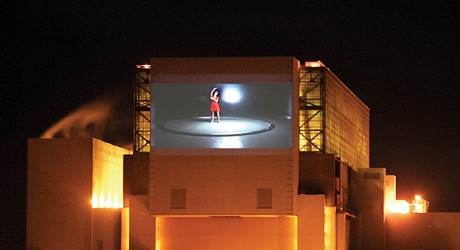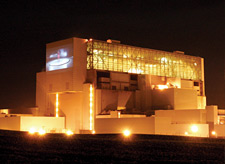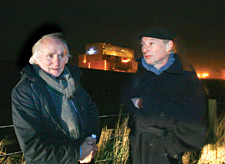|
|||||||||||||||
Nuclear drive-in
Standing outside in the dark and the cold on the east coast of Scotland, 500 people let out a communal gasp as a huge screen was illuminated on the side of the Torness nuclear power station. A six-minute video loop, Lumin de Lumine, transmitted by some of the most powerful projectors in the world, instantly changed the north wall of the building into the largest ever public-art installation in Europe. The project is visible from the main road and rail links between Edinburgh and London, and approximately 16 million travelers will pass by the “Nuclear Drive-in” each year.
Lumin de Lumine was filmed by Ken McMullen (photo, right) in the abandoned ISR tunnel at CERN as part of the Signatures of the Invisible art exhibition, which consisted of artworks produced in a collaboration between CERN scientists and leading European contemporary artists. The film shows a young woman in a red dress swirling an electric light bulb around her head, thus creating a constantly changing image of intensity, darkness, and light. “The film means many things,” says McMullen. “I first wanted to illustrate the uncertainty of the quantum world, where the precise position of subatomic particles could never be known. But now, I find it a telling metaphor for the dark universe. There is very little light and we are constantly surrounded by darkness, be it dark matter or dark energy.”
The project, promoted by Scottish arts impresario Richard DeMarco (photo, left), will continue for a year-long run if sufficient funding can be found.
Neil Calder
Click here to download the pdf version of this article.









